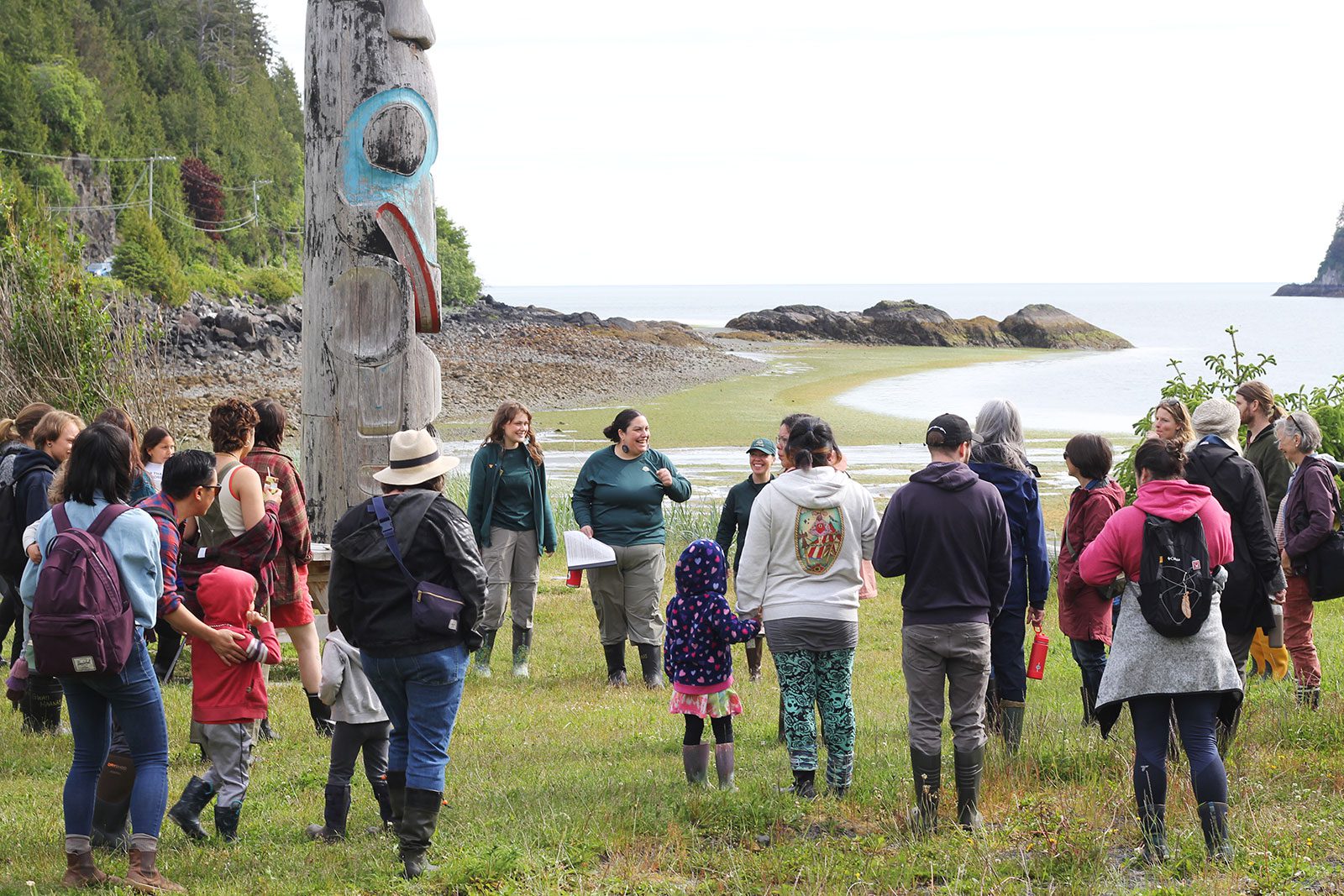
Anyone wondering who is drilling all those neatly rounded holes into Haida Gwaii clamshells got the answer on a World Ocean Day beach walk at the Haida Heritage Centre.
It’s the moon snails.
It takes two hands to hold a full-grown moon snail. They have a fleshy foot that can swell with seawater until it’s about dinner-plate size — way bigger than its own shell, and big enough to envelop and suffocate the little clams, mussels, periwinkles and herring eggs it preys on.
Called gyuudan in X̱aayda Kil, moon snails are among the biggest molluscs to plow the beaches of Haida Gwaii. They also have a unique way of digesting their neighbours.
Meighan Wilson, Ḵuuyas Jaad, is an interpretation officer with Gwaii Haanas. She was one of several experts who led more than two dozen people in gumboots and bare feet on a splashy, sometimes squishy tour of the Second Beach shoreline on June 8, World Ocean Day.
Wilson said that moon snails drill into clamshells using their saw-like radula, which have seven rows of teeth. But they only do that after squirt the clamshell with a digestive enzyme to soften it first.
“Once there is that perfect little hole, it will squirt some more of that enzyme in to the shell,” she said.
“It turns the clam into a bit of a clam smoothie, and then it can drink it all up.”




Wilson said moon snails, which sometimes eat each other, are also edible themselves.
“My nanaay ate them when she was young, and she said they have a bit of a garlic flavour.”
Even though she leads guided walks on Second Beach twice a month all summer, Wilson said she still sees something new every time.
Besides the moon snails and their rubbery-looking egg casings, other highlights on the World Ocean Day walk were a bright red sea cucumber, a mating pair of Dungeness crab, an invasive chain tunicate, and a Red Rock crab, all tucked among the rocks, seaweed and eelgrass exposed at low tide.
Tides on Haida Gwaii can vary more than seven metres, Wilson said, and when the tide is very high it’s obvious why the beach out front of the Haida Heritage Centre was a great place for a canoe run.
“You can really see how at high tide it is quite easy to have a canoe come up,” she said.
Getting to know local shorelines a little better is one goal of World Ocean Day, which was first proposed by Canada at a United Nations environment conference held in Rio de Janeiro in 1992.
Other activities at the Haida Heritage Centre this year included a screening of marine films, a talk about the marine harvesting in Haida culture, along with ocean-themed crafts and face-painting for kids.
On World Ocean Day, or any other day, Meighan Wilson had some helpful advice for anyone exploring the intertidal.
“Be very careful where you’re walking because you likely will step on something that is living today.”